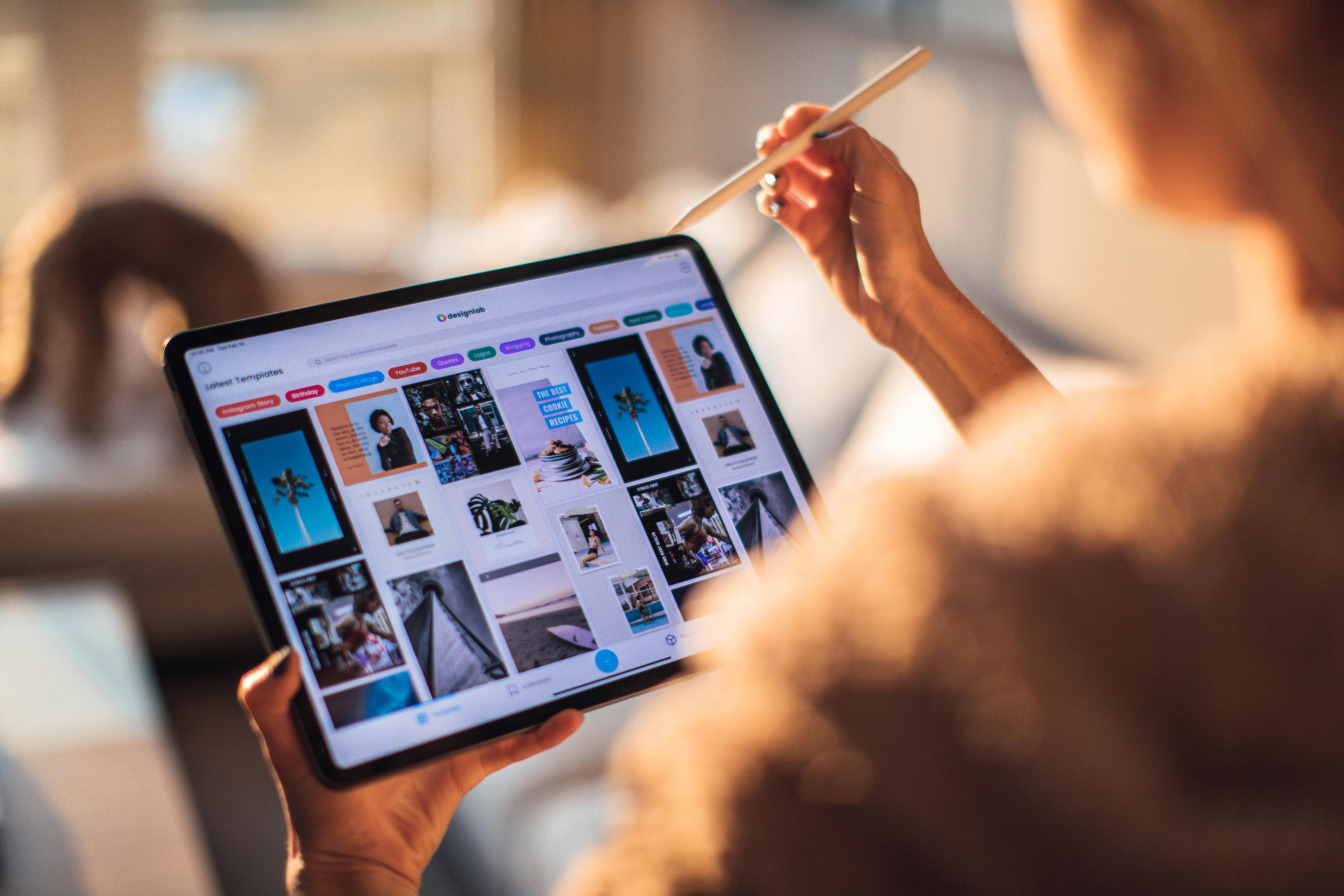The world of advertising is vast and ever-evolving, with myriad platforms and mediums to choose from when looking to promote your business. Amid all these options, one strategy continues to hold significant sway: media buying. But where can you buy media advertising space, and how can you ensure you’re making the most of your investment? This article delves into the ins and outs of media buying, guiding you through the process of identifying the right platforms, setting clear campaign goals, and negotiating the best deals for your business. Whether you’re a seasoned marketer or a small business owner venturing into the realm of paid advertising, this comprehensive guide is here to help you navigate the dynamic landscape of media buying.
In the following sections, we’ll explore the concept and importance of media buying in advertising, the distinction between media buying and media planning, and the factors to consider when buying media advertising space. We’ll also highlight some of the top platforms where you can buy media advertising space and share tips on how to negotiate media buys. Moreover, we’ll look into the latest media buying trends and share strategies on how to make media buying work for you. Let’s start with understanding what media buying is and why it’s an integral part of advertising.

Understanding Media Buying
When you see an ad pop up on your favorite website or during your favorite TV show, it’s no coincidence – it’s the outcome of a calculated process known as media buying. But what exactly is media buying and why is it so essential in the world of advertising?
Media buying is essentially the purchase of ad space and time on both digital and traditional platforms for the purpose of advertising. These platforms can include websites, social media, YouTube, TV, and radio. The central role of a media buyer is to negotiate with publishers for ad inventory, manage budgets, and optimize ads to enhance campaign performance.
So why should a business care about media buying? Because it’s the key to getting your brand in front of your target audience. Unlike inbound strategies like social media where users find you, media buying is an outbound strategy that works best with a well-thought-out plan. It’s not just about buying ad space; it’s about buying the right ad space at the right time for the right audience.
Let’s say you’re running a travel agency and your goal is to raise awareness rather than immediate sales. In this case, media buyers might opt for ad placements known for cheap impressions. On the other hand, if you’re a CEO wanting to promote a ‘letter to our customers,’ you’ll be more interested in garnering cheap clicks. Hence, the importance of strategic media planning prior to media buying cannot be overstated.
Media buying can be done in two main ways – direct buy and programmatic buy. Direct buy involves media buyers forging relationships with publishers to negotiate ad inventory. On the other hand, programmatic buying involves the use of automated technology for the buying process.
To sum it up, media buying plays a pivotal role in getting brands in front of their target market. It’s a crucial component of a successful advertising strategy that requires careful planning, strategic thinking, and expert execution. So, as you venture into the world of media buying, remember to think through your marketing goals and make sure you’re buying the right ad space at the right time for your target audience.
The Importance of Media Buying in Advertising
Mastering the art of media buying is a game-changer in advertising. It’s the secret sauce that spices up your marketing mix, enabling you to reach the right audience, at the right time, in the right place. But what exactly makes media buying so indispensable in advertising?
Firstly, media buying is the linchpin that connects your brand to your target audience. By securing the most fitting ad spaces on a variety of platforms – think websites, social media, radio, TV, and even print – media buyers ensure your brand message resonates with the right people. This is not a hit-or-miss strategy. It’s a calculated move based on thorough market research and audience analysis.
Secondly, media buying amplifies your brand’s reach. An experienced media buying team can negotiate deals that not only fit your budget, but also maximize your ad’s exposure. This is where the concept of ‘value added’ or ‘added value’ comes into play. It’s like a bonus round of impressions or ad spaces added to your agreement, often without extra cost, extending your brand’s reach and frequency.
Thirdly, effective media buying can boost your return on investment (ROI). By applying best practices and leveraging real-time metrics, media buying teams can optimize ad placements for maximum returns. They can attribute conversions and key performance indicators (KPIs) back to specific ads, allowing you to see the direct impact of your media buying efforts on your bottom line.
However, media buying is not without its challenges. Navigating the complexities of contract negotiations, measurement metrics, ad fraud, and in-campaign optimizations can be daunting. But with the right team and tools in place, media buying can open up a world of opportunities for your brand.
Finally, media buying is not a one-off task. It’s an ongoing process that requires constant monitoring, adjusting, and refining to ensure your advertising efforts remain effective and efficient. So, while media buying might not get as much buzz as the latest viral marketing trend, its importance in the advertising landscape is undeniable.
So, if you’re looking to supercharge your advertising strategy, it’s time to give media buying the attention it deserves. Remember, in the world of advertising, it’s not just about what you say, but where and when you say it. And that’s the power of media buying. Check out this guide to learn more about the process and benefits of media buying.

Media Buying vs Media Planning
The terms media buying and media planning often come up together in the world of advertising. Although they are closely related, they play distinct roles and serve different functions in a successful advertising campaign.
Media planning, as the term suggests, involves the planning phase of a campaign. It is the strategic process that occurs before any ad space is bought. Media planners research, analyse, and identify which media platforms would be most effective for reaching the target audience. They determine the campaign’s goals, set the budget, choose the appropriate media mix, and outline the timeline for the campaign. Furthermore, they identify key performance indicators (KPIs) to measure the campaign’s success.
For example, if the goal is to increase brand awareness, then impressions and reach might be the chosen KPIs. On the other hand, if the campaign aims to boost sales, then conversions might be the primary KPI. Media planners play a critical role in shaping the campaign and laying the foundation for media buyers.
Media buying, on the other hand, comes after the planning phase. It involves purchasing the actual ad space on the chosen media platforms. Media buyers negotiate with publishers or media outlets to secure the best possible prices and placements for the advertisements. They are also responsible for monitoring the campaign’s performance, adjusting bids and placements as necessary to optimize results.
It’s important to note that while media planning is more strategic and research-focused, media buying is more tactical and execution-focused. They are two sides of the same coin, both crucial for a successful advertising campaign.
In smaller organizations or businesses, the roles of media planning and buying might be combined or handled by the same team. However, in larger organizations, these functions are usually separated to ensure focus and specialization.
In conclusion, while media planning and media buying may seem similar, they each play a unique and vital role in the advertising process. Understanding the difference between the two can help you make more informed decisions and ultimately, create more effective advertising campaigns.

The Process of Media Buying
Diving into the world of media buying can seem like a daunting task. However, knowing the process can help you navigate it more effectively. This process is a series of steps that ensures your advertising campaign is aligned with your business goals and reaches your target audience effectively.
Step 1: Set the Budget: Guaranteed Inventory and Non-Guaranteed Inventory
The first step is to decide how much you’re willing to spend on your media buying campaign. This involves choosing between guaranteed inventory, where you pay for a specified amount of ad space, or non-guaranteed inventory, where you can usually get a discount for an unspecified amount of ad space.
Step 2: Send Requests for Proposals (RFP’s)
Next, you send out RFP’s to your desired media outlets. It’s important to assess which mix of outlets will most likely deliver the desired outcomes for your campaign.
Step 3: Finalize the Insertion Order (IO)
Once you’ve chosen your media outlets, you need to lock in your media order by submitting an insertion order (IO) to them. The IO is basically a formal contract between you and the media outlet.
Step 4: Send the Creative to the Media Outlets
The next step is to ensure each ad is properly sized according to each outlet’s specifications and send your ad creative to your chosen media outlets.
Step 5: Launch the Campaign
Now, the moment has arrived to launch your campaign. You’ll need to have the right software and metrics in place to measure your results.
Step 6: Continuous Measurement and Optimization
It’s crucial to continuously monitor your campaign’s key performance indicators (KPIs) to ensure you’re getting the optimal results. This involves checking metrics both on the media outlet’s end as well as internally.
Step 7: Reconcile Ad Spending with Original Budget
Next, you need to compare your ad spending against your original budget to see where you stand.
Step 8: Reconcile Costs and Negotiate “Make-Goods” on Underperforming Ads
If any of your ads are underperforming, you’ll need to reconcile those costs with your original budget and negotiate “make-goods” to boost performance.
This process, although it can be complex at times, is essential for running successful ad campaigns. It requires a blend of strategic planning, negotiation skills, and continuous monitoring and optimization. By following this process, you can ensure that your media buying efforts are well targeted, cost-effective, and yield the desired results.
Factors to Consider When Buying Media Advertising Space
When it comes to buying media advertising space, there are several crucial factors to consider. Every successful ad campaign begins with a clear understanding of your target audience, well-defined campaign goals, a set budget, and a thorough evaluation of the different media platforms available.
Identifying Your Target Audience
Who are you trying to reach with your advertising campaign? This is the first question you need to ask. The answer will help you determine the most effective channels for reaching your audience. Whether you’re using programmatic advertising or a direct buy, the focus should be on the persona more than the media itself. Consider their interests, behaviors, and the devices they use. By understanding your audience, you can ensure that your ads are seen by the right people at the right time.
Setting Clear Campaign Goals
What do you hope to achieve with your ad campaign? Whether it’s driving more website traffic, increasing brand awareness, or boosting social engagement, having a clear campaign goal is critical. This goal will not only guide your media buying decisions but also help you identify the key progress indicators (KPIs) necessary for tracking your campaign’s success.
Budget Considerations
Budget is a vital factor in any media buying process. Are you aiming for guaranteed inventory, where the amount of media space is specified, or non-guaranteed inventory, which usually comes at a discount? Determining how much you’re willing to spend will influence your choice of media outlets and the extent of your ad campaign.
Evaluating Different Media Platforms
Finally, consider the various media platforms available for your ad campaign. From Google’s Display and Video 360, Amazon’s DSP, to The Trade Desk, AdColony, Verizon Media, and more, each platform offers unique advantages. Evaluate each based on your campaign goals, target audience, and budget. Also, consider the ad placement options and the real-time bidding process, especially if you’re using an Ad Exchange or a Demand-Side Platform (DSP).
By carefully considering these factors when buying media advertising space, you can develop an effective ad campaign that not only reaches your target audience but delivers on your campaign goals while staying within your budget.

Top Platforms to Buy Media Advertising Space
In the age of digitization, the internet offers a vast array of platforms where you can buy media advertising space. Here are some of the top platforms you should consider for your media buying needs.
Google Display & Video 360
Integrated within the Google Marketing Platform, Google Display & Video 360 (DV360) offers seamless integration with Google Analytics and other Google products. It provides modules to build your campaign, manage your audience and creative assets, analyze your data, and access ad inventory from top publishers. Automated bidding and custom targeting using first and third-party data make it easier to reach the right audience.
Amazon DSP
Known for its immense reach, Amazon DSP is a demand-side platform that allows you to reach users on Amazon-owned websites, as well as other Amazon partners. The platform prioritizes brand safety to ensure ads don’t appear in risky or unsuitable environments.
The Trade Desk
If access to premium publishers is your priority, then The Trade Desk is the platform to consider. With an inventory that includes some of the biggest publishers such as Spotify, ABC, Wall Street Journal, and ESPN, you can reach your target audience effectively. The platform also uses AI-driven strategies to optimize your campaigns.
AdColony
For brands looking to reach mobile app users on both iOS and Android, AdColony provides multiple video formats and placements. The platform boasts of over 90K direct app integrations and a reported 450 million supply of app users.
Verizon Media
Offering more than just cell phone coverage, Verizon Media uses omnichannel strategies to engage consumers. Their digital out-of-home ads and connected TVs can help you achieve a higher average conversion rate from campaigns.
Criteo
Criteo is a global technology company that enables brands and retailers to connect more shoppers to the things they need and love. Its platform offers high-quality inventory and intelligent algorithms to help you achieve optimal ad placements.
StackAdapt
StackAdapt is a self-serve programmatic advertising platform used by North America’s most exceptional digital marketers. It offers native, display, video, and connected TV inventory across devices.
AcuityAds
AcuityAds is a leading technology company that provides marketers a powerful and holistic solution for digital advertising across all ad formats and screens to amplify reach and Share of Attention® throughout the customer journey.
Simpli.fi
Simpli.fi is a leader in programmatic advertising and agency management software, delivering comprehensive solutions to publishers, agencies, and brand advertisers.
Adelphic
Adelphic is a leading subscription-based, cross-channel programmatic advertising platform that offers a single solution for planning, buying, and measuring digital media campaigns.
Amobee
Amobee is a technology company that transforms the way brands and agencies make marketing decisions. The Amobee Marketing Platform enables marketers to plan and activate cross-channel, programmatic media campaigns.
Basis by Centro
Basis by Centro is a comprehensive and automated digital media platform that integrates programmatic, direct, search, and social into one user-friendly interface.
Xandr Invest
Xandr Invest is a strategic buying platform built for the future of advertising. It provides powerful insights and rich audience tools to help you optimize campaign performance.
AdRoll
Last but not least, AdRoll provides digital marketing technology for e-commerce brands. It allows businesses to aggregate, analyze, and act on customer data to deliver personalized marketing campaigns across various digital channels.
Choosing the right platform to buy media advertising space depends on your campaign goals, target audience, and budget. Each platform offers unique features and benefits, so consider your specific needs and objectives when making a decision.

How to Negotiate Media Buys
If you’re looking to get the most bang for your buck in media advertising, negotiating your media buys can be the key to unlocking greater value. However, the art of negotiation in media buying is a complex process and requires a clear understanding of various factors.
Understanding Different Types of Negotiations
When it comes to media buying, there are primarily two types of negotiation tactics: Zero-Sum and Integrative negotiations.
Zero-Sum negotiations are rather rigid, where one or both parties are unwilling to compromise. This approach often results in a strained relationship with the media company.
On the other hand, Integrative negotiations involve both parties working together to reach a mutually beneficial agreement. This approach is more common in media buying as it fosters a better relationship with the media company, resulting in more favorable outcomes in the long run.
Factors to Consider when Negotiating Media Buys
Effective negotiation in media buying requires an in-depth understanding of various factors that can impact the success of your campaign. Here are some key factors you should consider:
Do your research: Start by understanding the cost of leads in your industry, standard ad placements on various sites, and what types of ads perform the best. This information can help you negotiate better deals and ensure you’re investing your budget wisely.
Understand your budget: Have a clear idea of your overall budget and how you can maximize it. Be prepared to negotiate on premium spots and understand where you can make allowances.
Have a backup plan: If your preferred publisher or network is out of your budget or fully booked, having alternative options gives you more leverage in negotiations.
Establish an anchor: This negotiation strategy, developed by Nobel Prize winner Daniel Kahnemann, involves setting a lower initial bid to influence subsequent pricing discussions.
Lead Generation: Understand the filters you want on your leads before you start negotiating.
Negotiate Value Add-Ons: Don’t forget to negotiate for value add-ons, such as banner ads for an email campaign or an extra airing of a radio ad.
Get It In Writing: Ensure that everything agreed upon in negotiations is clearly stated in the contract to avoid any misunderstandings later on.
Negotiating media buys can be a complex process, but with careful planning and understanding of key factors, you can ensure you’re getting the most out of your media buying budget.

Media Buying Trends to Watch
In the ever-evolving world of advertising, staying ahead of emerging trends can give you a significant advantage in reaching your target audience effectively. Here are three media buying trends you need to keep an eye on.
Video Marketing
Video is fast becoming a dominant player in the digital advertising space. In fact, it’s expected that by the end of 2022, video content will account for a staggering 82% of all internet traffic. This trend offers a golden opportunity for media buyers to tap into the growing popularity and influence of video marketing. By integrating compelling video content into your media buying strategy, you can engage your audience in a more immersive and interactive way, potentially boosting your ad performance and return on investment.
Mobile Gaming Advertising
The mobile gaming industry has exploded in recent years, attracting a diverse audience that spans all ages and genders. Recent statistics reveal that 70% of mobile gaming enthusiasts would gladly forfeit TV or social media—two popular channels for advertisers—over mobile gaming. This shift presents a massive opportunity for media buyers to explore this relatively untapped digital advertising market. By incorporating mobile gaming advertising into your strategy, you can place your ads directly in front of your target audience, enhancing visibility and recall.
Programmatic Media Buying and Real-Time Bidding
The advent of artificial intelligence and machine learning has revolutionized the media buying landscape. Programmatic media buying, which uses technology to automate and optimize media purchases, has become increasingly popular. This approach focuses more on the persona rather than the media itself, asking “who do I want to reach?” rather than “where do I want to place media?” In practice, programmatic media buys work like an instant silent auction where you set your target, bid amount, and advertisement, leaving the rest to the AI.
Moreover, Real-Time Bidding (RTB), a key component of programmatic buying, allows advertisers to bid on ad space in real-time, ensuring optimal use of their advertising budget. This trend is set to continue, offering media buyers an efficient and cost-effective way to purchase ad space.
Staying abreast of these trends can help media buyers to better strategize their ad campaigns, optimizing ad spend and reaching their target audience more effectively. However, it’s essential to continuously monitor and adjust your media buying strategy according to changing trends and market dynamics.

Making Media Buying Work for You: Tips and Strategies
The success of your media buying strategy often hinges on your ability to adapt to the ever-changing digital advertising landscape, but also on your ability to make smart, strategic decisions. Here are some tips and strategies to ensure your media buying efforts are successful and cost-efficient.
1. Align Your Media Buying Strategy with Your Marketing Goals: When setting up your media buying strategy, make sure it aligns with your overall marketing goals. Are you trying to increase brand awareness, drive website traffic, or boost conversions? Your goals will determine the type of media you purchase, the platforms you use, and the metrics you track.
2. Understand Your Audience: Effective media buying requires a deep understanding of your audience. Use data and analytics to identify who your target audience is, what they’re interested in, and where they spend their time online. This will help you make informed decisions about which platforms and ad formats to use.
3. Leverage Multiple Platforms: Don’t limit yourself to one platform. Different platforms have different strengths and cater to different audiences. For example, Google Display & Video 360 is great for reaching a broad audience, while Amazon DSP is ideal for targeting specific consumer segments based on their shopping behavior.
4. Monitor and Optimize Your Campaigns: Media buying is not a set-it-and-forget-it process. It’s crucial to constantly monitor your campaigns and adjust your strategy based on performance data. If an ad isn’t delivering the expected results, don’t hesitate to adjust its placement, format, or targeting parameters.
5. Test, Test, Test: Always be testing. Try different ad formats, copy, images, and placements to see what works best. A/B testing can provide valuable insights into what resonates with your audience and what doesn’t.
6. Negotiate Rates: Don’t accept the first rate you’re offered. Media rates are often negotiable, especially if you’re buying in bulk. Be prepared to negotiate in order to get the best possible deal.
7. Stay Current with Trends: Lastly, stay abreast of the latest media buying trends. This will allow you to adapt your strategy as needed and take advantage of new opportunities as they arise.
By keeping these tips and strategies in mind, you can maximize the effectiveness of your media buying efforts and ensure you’re reaching your target audience in the most efficient and cost-effective way possible.
Conclusion
To wrap things up, media buying is an integral part of any successful advertising strategy. It’s the engine that fuels your marketing campaign, driving your message to the right audience, at the right time, on the right platforms. By understanding the process, considering crucial factors, utilizing the top platforms, and keeping abreast with the latest trends, you can leverage media buying to elevate your brand visibility, engage your target audience, and ultimately, boost your business growth.
Remember, effective media buying is not just about spending your budget. It’s about investing wisely and strategically to achieve your campaign goals and maximize your return on investment. So whether you’re a seasoned marketer or a small business owner venturing into the realm of media buying for the first time, keep these insights in mind.
Finally, don’t hesitate to seek professional assistance if you need it. There are experts and tools available to help you navigate the complexities of media buying. No matter your budget or business size, there’s a media buying strategy that can work for you. So why wait? Start exploring the possibilities of media buying today and see how it can transform your advertising efforts. Happy buying!

